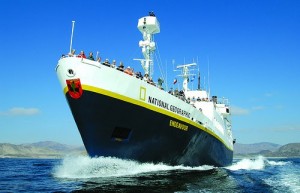 This week The Sea Around Us Project’s Daniel Pauly is in the Galapagos Island along with many other notable guests of Mission Blue to fulfill Sylvia Earle’s 2009 TEDPrize wish. TED talks, which is normally hosted in Monterey, California, gathers together remarkable speakers and then makes their talks available online. This time the meeting is taking place in the Galapagos on the National Geographic boat The Endeavor and over the four days, attendees of Mission Blue will experience seven fully programmed TED sessions, which include fellow marine scientists Jeremy Jackson, Callum Roberts, Enric Sala, as well as the host Sylvia Earle. Read about the full line-up and follow the Mission Blue blog.
This week The Sea Around Us Project’s Daniel Pauly is in the Galapagos Island along with many other notable guests of Mission Blue to fulfill Sylvia Earle’s 2009 TEDPrize wish. TED talks, which is normally hosted in Monterey, California, gathers together remarkable speakers and then makes their talks available online. This time the meeting is taking place in the Galapagos on the National Geographic boat The Endeavor and over the four days, attendees of Mission Blue will experience seven fully programmed TED sessions, which include fellow marine scientists Jeremy Jackson, Callum Roberts, Enric Sala, as well as the host Sylvia Earle. Read about the full line-up and follow the Mission Blue blog.
November/December 2009 Newsletter
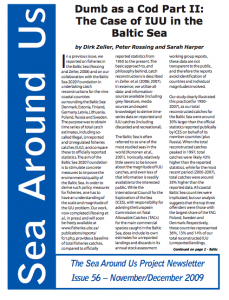 Read about IUU fishing in the Baltic Sea, get a glimpse at the last 10 years of the Project, and see a summary of the 2009 publications from the Sea Around Us in the November/December newsletter.
Read about IUU fishing in the Baltic Sea, get a glimpse at the last 10 years of the Project, and see a summary of the 2009 publications from the Sea Around Us in the November/December newsletter.
Pauly Receives Honorary Doctorate in Portugal
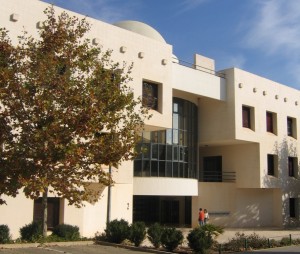 In late January, Dr. Daniel Pauly traveled to Portugal to accept an honorary doctorate from the University of the Algarve. He was honored alongside Dr. Emygdio Landerset Cadima and gave a lecture following Dr. Sidney Holt. Listen to Dr. Pauly’s lecture here.
In late January, Dr. Daniel Pauly traveled to Portugal to accept an honorary doctorate from the University of the Algarve. He was honored alongside Dr. Emygdio Landerset Cadima and gave a lecture following Dr. Sidney Holt. Listen to Dr. Pauly’s lecture here.
Sea Around Us Bridges Science and Society
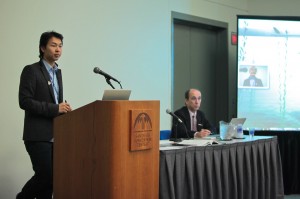 The theme at the 2010 AAAS annual meeting held in San Diego, CA in mid-February was Bridging Science and Society. Sea Around Us members delivered on this theme in three different sessions. Daniel Pauly presented on a panel that showed the growing consensus among fisheries scientists. Although global overfishing is becoming an accepted premise, questions inevitably arose on the future of aquaculture. Pauly explained that it would be wrong to look at gladiator tournaments and vilify sports, when there is curling; similarly, it would be wrong to look at salmon farming and vilify aquaculture, when there are oyster farms.
The theme at the 2010 AAAS annual meeting held in San Diego, CA in mid-February was Bridging Science and Society. Sea Around Us members delivered on this theme in three different sessions. Daniel Pauly presented on a panel that showed the growing consensus among fisheries scientists. Although global overfishing is becoming an accepted premise, questions inevitably arose on the future of aquaculture. Pauly explained that it would be wrong to look at gladiator tournaments and vilify sports, when there is curling; similarly, it would be wrong to look at salmon farming and vilify aquaculture, when there are oyster farms.
Metaphors are powerful communication tools. So are 3-D visualizations, especially in a world that is already too big and too fast-paced to keep track of information. Can we help manage the future by allowing people to see it? To address this question, Villy Christensen co-organized a panel on the use of visualizations to bridge science and society for sustainability.
The Sea Around Us Project’s Sherman Lai showed the game-like tool he and Christensen developed to allow users to visualize the real-time effects of their fishing decisions (see photo). Multiple players can watch how their choices would play out on the underwater world using a video game interface that can also display the embedded EcoSim models. These tools, currently used in immersion labs like our own in the Fisheries Centre, are designed to allow managers to experience the results of potential policies. The panel also discussed the potential for these tools online.
Jennifer Jacquet and her other panel members discussed non-regulatory means of enhancing cooperation – namely through reputation and shame. Ralf Sommerfeld, a recent graduate who worked with the Max Planck Institute, presented several of his new game theoretical studies showing that gossip and reputation can lead to increases in overall cooperation. Jacquet proposed we migrate away from guilt-based efforts in conservation (e.g. eco-labels) and toward shame-based strategies, which we can use to motivate large-scale resource users. To show evidence of this in the real world, John Hocevar, head of oceans campaigns for Greenpeace USA, presented Greenpeace work to affect retailer reputation to encourage greater cooperation.
The Sea Around Us members also participated in the COMPASS marine mixer with scientists and journalists and talks on designing and implementing large-scale marine reserves. AAAS was truly a meeting to bridge science and society.
September/October 2009 Newsletter
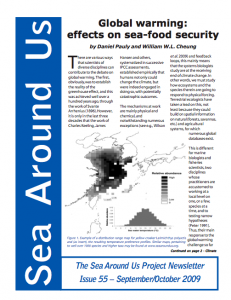 Read about the effects of global warming on seafood security, the vaquita and shrimp trawlers in Mexico, and what it’s like to do a M.Sc. at the Fisheries Cetnre in the latest Sea Around Us newsletter here.
Read about the effects of global warming on seafood security, the vaquita and shrimp trawlers in Mexico, and what it’s like to do a M.Sc. at the Fisheries Cetnre in the latest Sea Around Us newsletter here.

